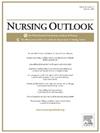呼吁采取行动,减少与病人处理有关的职业危害,以保护劳动力
IF 3.7
2区 医学
Q1 NURSING
引用次数: 0
摘要
近年来,过度劳累造成的护理伤害有所下降,但2020年有所增加。通过病人安全处理(SPH)减少工伤(WRI)可以保护护理人员队伍。我们需要着眼于劳动力保护的政策。目的:研究2002年启动的循证SPH项目在减少护士伤害方面的效果,并与全国模式进行比较,为推广该项目提供参考。方法采用三步迭代混合方法,将国家WRI和过度劳累造成的工作日损失数据与案例进行比较。该案例的表现优于全国趋势。数据表明,全面的、以证据为基础的SPH项目带来了效益,职业安全与健康管理局可记录的WRI和工作日损失中位数稳步下降。58项实施策略促进保护动物协会做法的可持续性。讨论与结论SPH可以减少伤害和工作日损失,但需要为不同设置的SPH设备提供资金。提供了对组织、研究和技术开发、政策和劳动力保存的含义。本文章由计算机程序翻译,如有差异,请以英文原文为准。
Call to action to reduce the occupational hazard associated with patient handling for workforce preservation
Background
Nursing injuries from overexertion decreased in recent years, but 2020 saw an increase. Reducing work-related injuries (WRI) through safe patient handling (SPH) can preserve the nursing workforce. Policies focused on workforce preservation are needed.
Purpose
We investigate an evidence-based SPH program initiated in 2002, in reducing injuries among nurses compared with national patterns, and offer a blueprint for replication.
Methods
A three-step iterative, mixed-methods approach compares national data on WRI and lost workdays from overexertion with a case example.
Findings
The case example outperforms national trends. Data demonstrate benefits from a comprehensive, evidence-based SPH program with steady reductions in Occupational Safety and Health Administration recordable WRI and median workdays lost. Fifty-eight implementation strategies promoted sustainability of SPH practices.
Discussion and Conclusion
SPH can reduce injuries and lost workdays but requires funding for SPH equipment across settings. Implications for organizations, research and technology development, policy, and workforce preservation are provided.
求助全文
通过发布文献求助,成功后即可免费获取论文全文。
去求助
来源期刊

Nursing Outlook
医学-护理
CiteScore
6.20
自引率
7.00%
发文量
109
审稿时长
25 days
期刊介绍:
Nursing Outlook, a bimonthly journal, provides innovative ideas for nursing leaders through peer-reviewed articles and timely reports. Each issue examines current issues and trends in nursing practice, education, and research, offering progressive solutions to the challenges facing the profession. Nursing Outlook is the official journal of the American Academy of Nursing and the Council for the Advancement of Nursing Science and supports their mission to serve the public and the nursing profession by advancing health policy and practice through the generation, synthesis, and dissemination of nursing knowledge. The journal is included in MEDLINE, CINAHL and the Journal Citation Reports published by Clarivate Analytics.
 求助内容:
求助内容: 应助结果提醒方式:
应助结果提醒方式:


